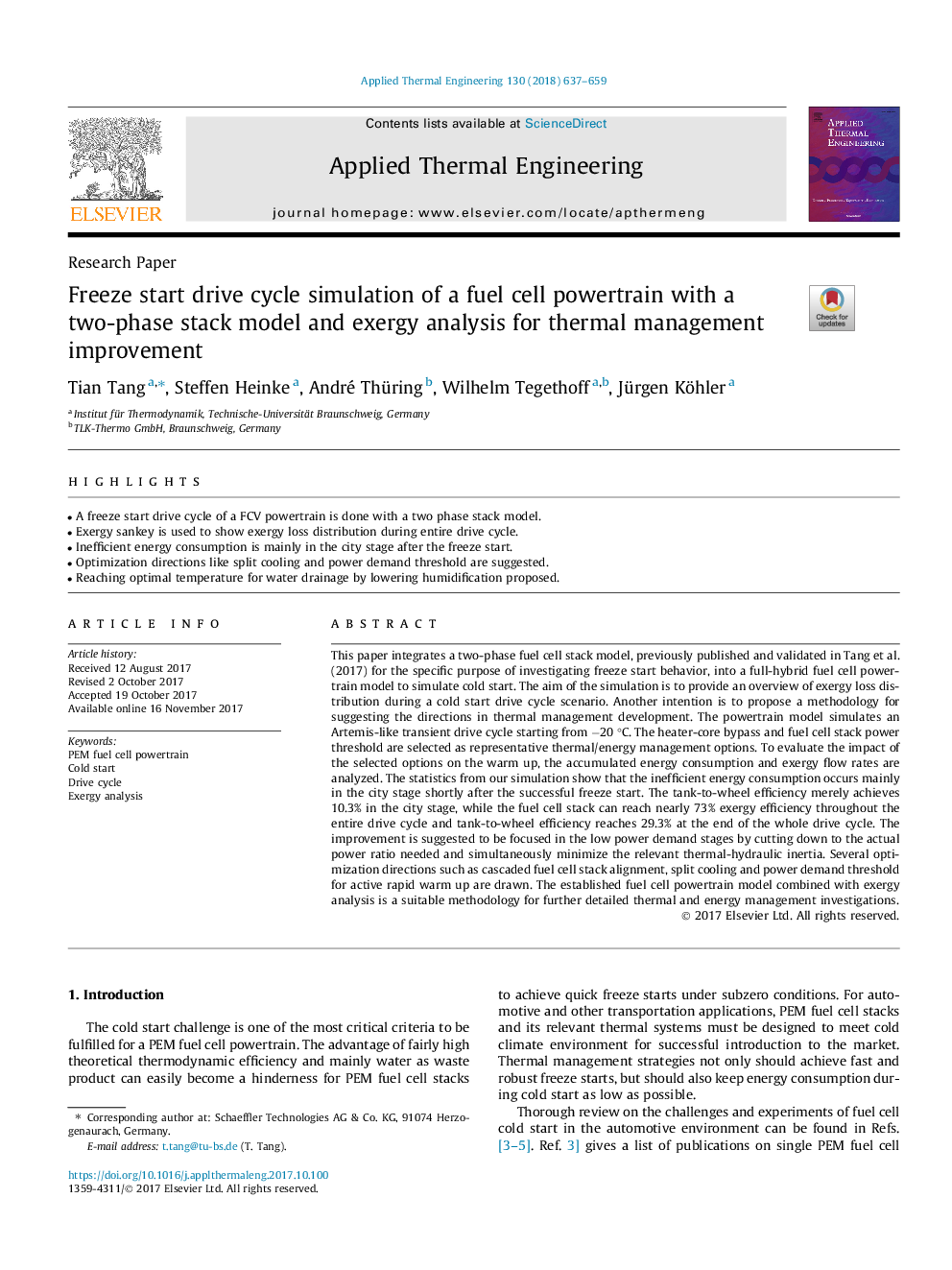| Article ID | Journal | Published Year | Pages | File Type |
|---|---|---|---|---|
| 7046423 | Applied Thermal Engineering | 2018 | 23 Pages |
Abstract
This paper integrates a two-phase fuel cell stack model, previously published and validated in Tang et al. (2017) for the specific purpose of investigating freeze start behavior, into a full-hybrid fuel cell powertrain model to simulate cold start. The aim of the simulation is to provide an overview of exergy loss distribution during a cold start drive cycle scenario. Another intention is to propose a methodology for suggesting the directions in thermal management development. The powertrain model simulates an Artemis-like transient drive cycle starting from â20â¯Â°C. The heater-core bypass and fuel cell stack power threshold are selected as representative thermal/energy management options. To evaluate the impact of the selected options on the warm up, the accumulated energy consumption and exergy flow rates are analyzed. The statistics from our simulation show that the inefficient energy consumption occurs mainly in the city stage shortly after the successful freeze start. The tank-to-wheel efficiency merely achieves 10.3% in the city stage, while the fuel cell stack can reach nearly 73% exergy efficiency throughout the entire drive cycle and tank-to-wheel efficiency reaches 29.3% at the end of the whole drive cycle. The improvement is suggested to be focused in the low power demand stages by cutting down to the actual power ratio needed and simultaneously minimize the relevant thermal-hydraulic inertia. Several optimization directions such as cascaded fuel cell stack alignment, split cooling and power demand threshold for active rapid warm up are drawn. The established fuel cell powertrain model combined with exergy analysis is a suitable methodology for further detailed thermal and energy management investigations.
Keywords
Related Topics
Physical Sciences and Engineering
Chemical Engineering
Fluid Flow and Transfer Processes
Authors
Tian Tang, Steffen Heinke, André Thüring, Wilhelm Tegethoff, Jürgen Köhler,
